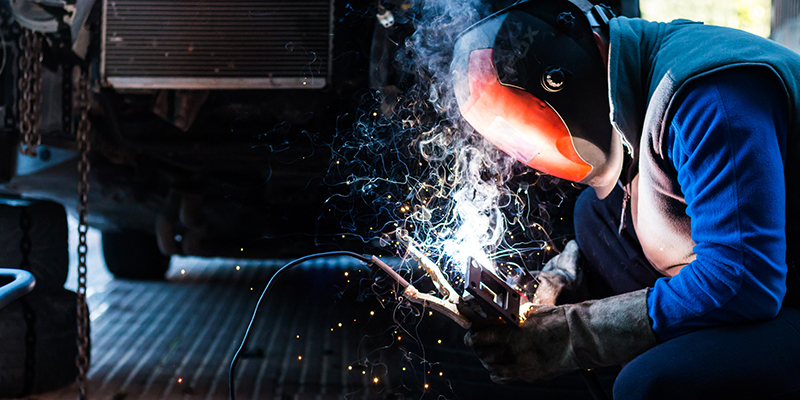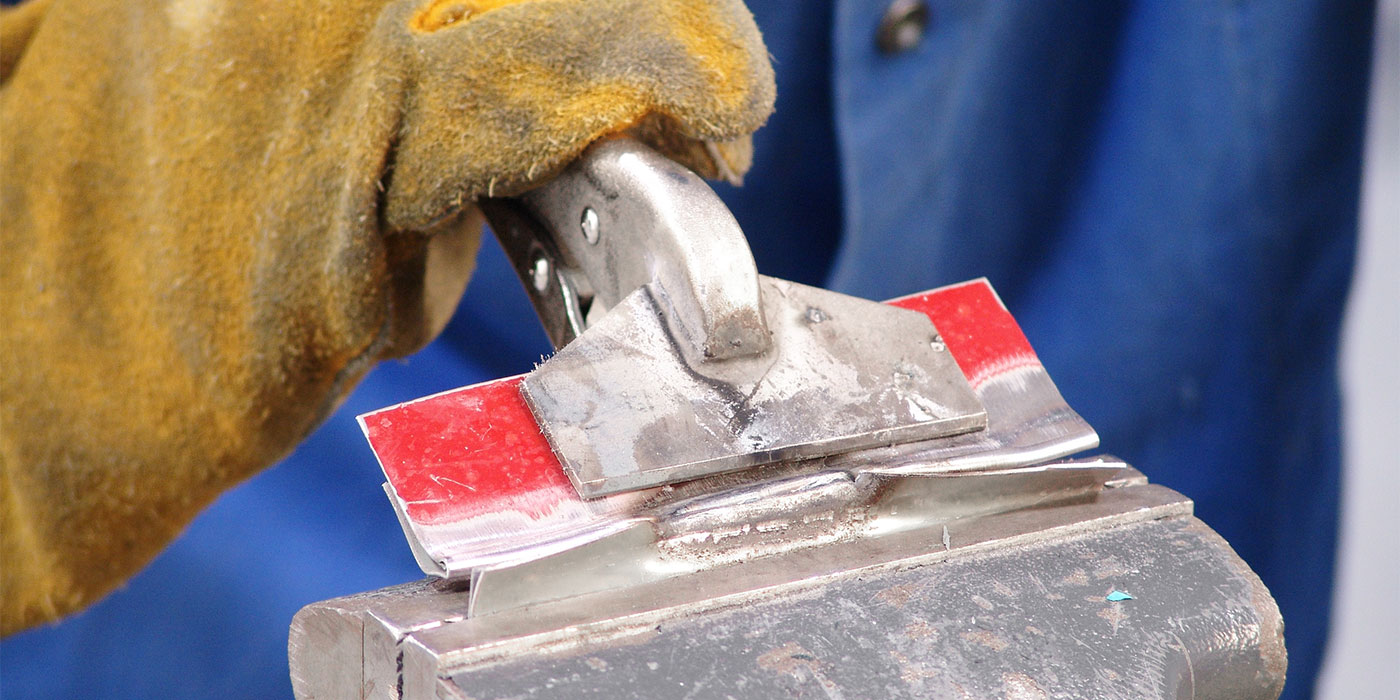Changes have been happening in our repair industry at an incredible pace. We must realize that the way we repair vehicles today and the way we’ll repair vehicles in the future will keep changing.
Keeping up with these changes can be difficult. Some changes are easy, and some changes are hard. No matter what we’re asked to do, the best way to approach change is with an open mind. We may not understand or even like the change we’re being asked to make, but there is a reason. We don’t have the luxury of guessing or ignoring what’s asked of us.
Electronics
Much of the focus of change lately has been on “techie” electronics such as ADAS and computers and sensors. We’ve had to increase our knowledge of electric components and computers, and an increase in hybrid fuels in combination with electric motors will require us to further our knowledge even more. Electronics is a major factor in repairs today and will also be in the future.
Advanced Materials
Other elements of repair have been changing, too. The use of aluminum in vehicle construction is predicted to increase in the future, primarily due to the weight savings, especially in larger vehicles. And the aluminum repair processes will keep increasing in the collision industry as the aluminum increases in use. In many smaller cars, the increasing use of high-strength steels, in conjunction with aluminum, has also produced many changes in repair procedures.
The new steels being used in vehicle construction will be the focus of this article. I’m going to help you understand why a change in repair procedures will be needed, and why you will need to access the OEM repair information to make a correct decision on how to repair.
Keep in mind that making the correct repair decision does not just apply to the technician working on the vehicle but also estimators and adjusters. Determining what to repair versus what to replace needs to be a priority in the disassembly process and will be a key factor in increasing or maintaining production in any shop. Estimators/adjusters and repair technicians all need to be on the same page regarding the OEM requirements.
MPa
The classifications of mild-strength steel (MSS), high-strength steel (HSS) and ultra-high-strength steel (UHSS) are still in use, but many automakers are using metric classifications. Knowing what types of repair or welding procedures are allowed on OE steels requires us to learn the MPa of the steel and the instructions for that strength classification.
One point to be made here is that everyone must learn and understand megapascals or MPa and its classification and use. MPa is a metric unit of measurement of force. In the automotive repair world, 1 MPa = 145.038 psi. This math is extremely relevant to our industry. If a vehicle manufacturer is stating that its steel is 1500 MPa, it’s stating that its steel is 217,516.6-psi steel – an ultra-high-strength steel classification. What if the part is listed as DP590? Dual-phase 590 MPa is the designation. The 590 is the MPa. The chart below will give you the approximate comparison versus rounded out numbers:
1 MPa = 145 psi (approximately)
10 MPa = 1,450 psi
100 MPa = 14,500 psi
590 MPa = 85,572 psi
1000 MPa = 145,000 psi
1500 MPa = 217,516 psi
Repair procedures will be classified by MPa as to the use of heat during straightening or if straightening is allowed. The MPa will also determine the attachment method — STRSW, MIG/MAG welding, MIG brazing, just to name a few. This classification will also designate the welding equipment and wire required by the OE. No longer can we just grab a welder and go. Note: Some numbers will be represented in ksi versus psi.
I cannot stress the importance of this knowledge enough. Heat on HSS weakens its properties and can create weak spots or even crush zones in areas not desired. With UHSS, much of the strength and properties can be destroyed at fairly low-heat temperatures, compromising vehicle integrity.
Attachment Process
When it’s determined that a part must be replaced, we need to determine what attachment process will be used by accessing OE requirements and following them diligently. Attachment processes include:
- Mechanical
- Adhesive
- Rivet or weld bonding
- STRSW (squeeze type resistance spot welding)
- GMAW: gas metal arc welding or MIG/MAG welding
- MIG – metal inert gas, ex. flux core wire, 100-percent argon shielding gas
- MAG – metal active gas, ex. 75-percent argon, 25-percent CO2 (most common)
The process recommended by the OE for repairs may be different than the process it used in the factory. This is due to equipment and access to the backside of the repair.
New vehicles today also stress a major consideration in the repair process: the heat affect zone, or HAZ. The heat during welding extends out from the weld. The further out it goes, the more it could weaken the surrounding HSS or UHSS. This is why STRSW is highly recommended to prevent surrounding damage or creating weak spots. This is also why we’re seeing an increase in rivet bonding on steel by some OEs. The less heat, the less corrosion, along with other problems associated with heating steels. The STRSW weld is fast and strong with little damage to surrounding steel. The problem is access.
Where access was a problem, an alternative was the famous plug weld. Techs have used this joining process for years, and each has probably performed thousands of these welds. On some of the newer vehicles with UHSS, the plug weld has become a problem. The damage to surrounding properties of the steel being welded as well as the corrosion hot spot created has many turning away from this process. The increased use of MIG brazing counters this problem, as there is no melting or overheating of base metals.
Rewiring
The plug weld is not the only weld that has these issues. The seam welds on outer panels and welds on inner reinforcements and frame rails have become susceptible to the same problems. Another factor is weld contamination from poor preparation, the wrong wire being used or reaction to active gases being used for shielding. Shops need to educate writers and techs on the welding requirements required by the OEs. Here is what a tech should know before starting any attachment process requiring welding:
- Type of weld: STRSW, GMAW, MIG/MAG seam or plug weld, MIG brazing plug or seam weld
- Equipment: STRSW equipment has become a necessity for shops. Pulse capability will be needed to work with new steels and for weld bonding.
- GMAW equipment: 110-volt welders may be too slow or underpowered to create enough heat quickly to not damage surrounding metal (HAZ). This lack of power may also not be efficient enough to effectively weld with the thicker wire diameters required by OEs. The 220/240 volt welders have enough power to use the thicker wires and make the welds quickly. These welders may also be equipped with pulse capabilities required for CuSi or MIG brazing, as well as aluminum capabilities.
- Gas: Does the manufacturer recommend MIG or MAG welding with a GMAW machine? MAG welding is with either 75/25 or 80/20 mixed gas (argon and CO2). MIG welding will be used for aluminum and MIG brazing or CUsi welds. Shielding gas of 100-percent argon is most recommended.
Wire
Now come the wire requirements.
There are many different types of wire with many different characteristics. As metals have become more complex and strong, the wire we use to join panels and weld inner structures has changed. Technicians are unaware that the wire they have in their welders may be entirely wrong. It’s the same wire we’ve used for years, but it’s wrong! A basic rule is that the wire must meet the minimum strength of the metals being welded.
You’ll be asked to use specific-power welders with specific wires. I’m going to break them down for you and explain the “why” as best I can.
General Purpose Mild Steel
ER70S-3 MIG/MAG welding wire: A general use wire to be used on a clean, oil-free and rust-free base material. Used by manufacturers on clean base to prevent silicon build-up on the surface of the weld, causing topcoats to not adhere properly for corrosion protection. Better or multi-pass welding. Common sizes .023 to .035 or .6 mm to .9 mm. Specifically called for by some OEs for welding frames with 220V machines. Less wetting solidifies quicker, maintaining weld thickness. Meets AWS requirements of minimum strength of 70,000 psi or 70 ksi.
ER70S-6 MIGMAG welding wire: A general use welding wire for use with mild steel. Has more deoxidizers than ER70S-3 wire. Can be used on surfaces with mill scale and/or contaminants. Additional oxidizers also provide better wetting and transition from weld to base metal. Common sizes .023 to .035 or 6 mm to .9 mm. Meets AWS requirements of minimum strength of 70,000 psi or 70 ksi.
It is important to note that all wires have alloys of varying degrees. When buying wire, check the specifications on alloys and percentages as weld quality is affected dramatically by these factors. Many manufacturers produce wire that may be too low of a grade for automotive use.
AHSS and HSLA Steels
(Honda)
Bohler Union X96 980MPa MAG wire: Wire required by Honda to weld parts that are 590 to 980 MPa. May also be used on 270 to 440 MPa. Wire strength of 142 ksi or 142,000 psi. Specific manufacturers are used to meet all requirements of strength and alloys to meet Honda requirements. MAG butt welding has been approved to 780 MPa. Butt welds must be made as quickly as possible while maintaining proper penetration. Size 0.8 mm diameter is required.
Studies have shown that using wires not meeting strength requirements have more weld defects, causing rejection of the AHSS weld. Quality wire has a definitive outcome on the quality of the weld. AHSS and HSLA are less forgiving to defects of electrode wire matching than mild steels. Matching chemical compositions gives greater reliability of weld and arc control.
MIG Brazing
CuSi-3 MIG brazing (silicon bronze welding): MIG brazing is used where heat effect on higher strength steels is a factor. On 1500 MPa steel, Honda requires MIG brazing where STRSW electrodes won’t reach. A low-temperature cold fusion process not requiring melting of base metals joins to make an incredible bond. Oxidizers offer corrosion protection to the weld process and readily bond with galvanized steels. A 220/240 welder with pulse is a required piece of equipment. Welding wire 0.8 mm is recommended.
Wire Diameter
As noted by vehicle manufacturers, 0.8 or .030 wire diameter is rapidly becoming universal in all electrode wires. The new 220/240 welders give better heat control than in the past and allow technicians to use thicker wire more efficiently.
Aluminum
Many of the same considerations are involved in selecting aluminum wire. The series and alloys must match to have good weld integrity. Vehicle manufacturers call for specific wires and equipment to also ensure proper repairs…but that’s another article for a different day.
Summary
Never assume anything is the same as it was…even last year! Seek out the I-CAR RTS website to learn more. Take the I-CAR welding qualification classes. You’ll be amazed at what you’ll learn.














